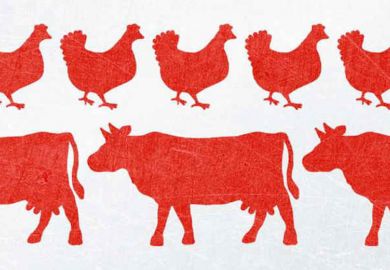Islamic Civilization in Thirty Lives: The First 1,000 Years
Chase F. Robinson
Thames & Hudson
“Because memory and record were often compounded over centuries by legend, myth and misunderstanding, we generally know much more about the afterlives of early Muslims than we do their actual lives,” observes Robinson. Undaunted, he offers a beautifully written, well-illustrated set of brief, vividly drawn portraits, in which expected names – Muhammad and ‘A’isha, Saladin, Ibn Rushd (or Averroes), Mehmed II and “sheep-rustler, world-conqueror” Timur – share space with saints, poets, polymaths, physicians, courtesans and calligraphers.
Crimes Unspoken: The Rape of German Women at the End of the Second World War
Miriam Gebhardt
Polity
It certainly wasn’t just the Reds. Addressing, with painstaking rigour, a “gap in the literature” that here indicates the silencing of suffering on a nightmarishly vast scale, Gebhardt considers the countless Germans (some 860,000 women and many men) subjected to sexual violence in the aftermath of the war. “The women raped by Russian soldiers were at least afforded some recognition, even if it was manipulated for ideological ends…The women violated by GIs, British and French soldiers, by contrast, were, if anything, punished with contempt.” A harrowing and highly recommended work of scholarship.
The Semiotics of Emoji: The Rise of Visual Language in the Age of the Internet
Marcel Danesi
Bloomsbury
No, we aren’t going to hell in a handbasket full of ![]() , the “Face with Tears of Joy” emoji that Oxford Dictionaries chose as Word of the Year in 2015. Danesi argues for emoji’s study-worthiness, reassuring harrumphers that “the five traditional canons of rhetorical language can easily be discerned in emoji usage”: inventio, dispositio, elocutio, memoria and actio. He unpicks code-switching, calquing, adjacency pair variation, adjunctive use and the globalisation of communications; considers whether the popularity of the poop emoji
, the “Face with Tears of Joy” emoji that Oxford Dictionaries chose as Word of the Year in 2015. Danesi argues for emoji’s study-worthiness, reassuring harrumphers that “the five traditional canons of rhetorical language can easily be discerned in emoji usage”: inventio, dispositio, elocutio, memoria and actio. He unpicks code-switching, calquing, adjacency pair variation, adjunctive use and the globalisation of communications; considers whether the popularity of the poop emoji ![]() in Canada reveals a fondness for ironic stoicism; and asks whether emoji are a “real revolution in how we communicate” or “just a passing fad”.
in Canada reveals a fondness for ironic stoicism; and asks whether emoji are a “real revolution in how we communicate” or “just a passing fad”.
Neuroenology: How the Brain Creates the Taste of Wine
Gordon M. Shepherd
Columbia University Press
The red, the white and the grey matter: a neuroscientist selflessly undertakes flagon-focused research – including sundry Bordeaux vintages on the Château Pétrus and Dominus Estate – in tireless pursuit of his theory that taste is an illusion. In fact, it’s really all about fluid biomechanics, the physiology of the mouth and throat, retronasal smell and the motor activity of swallowing. Amaze fellow tipplers with knowing references to the integration of congruent cross-modal stimuli, and don’t miss the wine-tasting tutorial in the appendix. Santé!
The Evolution and Evaluation of Massive Open Online Courses: MOOCS in Motion
Leonard J. Waks
Palgrave Macmillan
Neoliberal con, 2012’s future of higher education, 2016’s busted flush, or “just one more form of media”? In a brief study bristling with subheadings, point-form pronunciations, data-dump detail and boldface, Waks looks “beyond the conventional higher education paradigm” – yes, that old thing – to point to Moocs’ antecedents, pay due heed to the developing world, and argue that such courses “can accomplish tasks the critics claim they cannot” and even “make professors better at contemporary academic work”. The final boldface subheading, “From Jobs to ‘Gigs’”, and the comment that “the employment of professionals is…costly to organizations” may not reassure sceptics.
Register to continue
Why register?
- Registration is free and only takes a moment
- Once registered, you can read 3 articles a month
- Sign up for our newsletter
Subscribe
Or subscribe for unlimited access to:
- Unlimited access to news, views, insights & reviews
- Digital editions
- Digital access to THE’s university and college rankings analysis
Already registered or a current subscriber?




